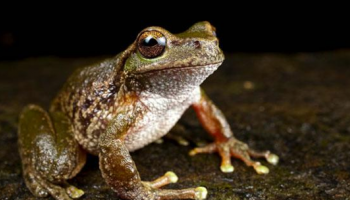Controversial topic though it may be, it’s essentially a universally acknowledged scientific fact that if a species is to be the very best, like no one ever was, they need to be able to evolve.
The process of evolution is most simply described as the change in inherited characteristics in a population over successive generations. This can apply to entire species, individual plants or animals, and molecules such as DNA.
All life on Earth evolved from a universal ancestor billions of years ago. A number of different mechanisms such as natural selection, migration, and the frequency of certain mutations are constantly in play, resulting in outcomes including adaptation, speciation (one species diverging into two or more separate species) and extinction.
While we now have a fairly solid base understanding of how life on Earth evolved, up until recently the same could not be said for the many inhabitants of the Pokémon universe.
A group of scientists from the University of California published a paper entitled “A Phylogeny and Evolutionary History of the Pokémon” in the Annals of Improbable Research journal late last year. In it, they map out a phylogenic tree demonstrating the evolutionary development of 646 Pokémon. The group identified a need for documenting the evolution of Pokémon, citing small populations (some species being known only from a single specimen), and threat of extinction from “Pokémon fighting rings that are growing rapidly in popularity, particularly among urban youth”.
A phylogenic tree is a branched diagram that looks similar to a family tree, showing where and when different species diverged from one another. The tree generated by the group’s data suggests that, like life on Earth, all Pokémon life began in the water, with species similar to lampreys and bony fish. They hypothesise that terrestrial life arose on three independent occasions, giving rise to Ice types (starting with the Dewgong); Flying types (starting with the Pelipper); and Normal types. They found that Psychic types diverged from the birds, starting with Xatu, and gradually lost the ability to fly; and Grass, Fire and Electric types arose from the Normal types.
The paper explained some complicating factors for any research into Pokémon diversity, including the misuse of the term ‘evolution’ (this would normally be termed ‘metamorphosis’), the occasional definition of males and females as two different species (for example, Nidoqueen and Nidoking), and the ability of many Pokémon to breed between species without resulting in a hybrid – not to mention that “how a 400-kilogram Wailord is able to mate with an 11-kilogram Skitty at all remains a mystery”.
Since the paper’s publication, the group’s research has been used by biology teachers to introduce the concepts of evolution and phylogeny to their students, and disputed by other scientists who have come up with alternative theories. One thing remains certain, though: we must continue to research each Pokémon to understand the power that’s inside.
You can read the original article and see the Pokémon phylogenic tree at http://www.neatorama.com/2012/11/27/A-Phylogeny-and-Evolutionary-History-of-the-Pokemon/


